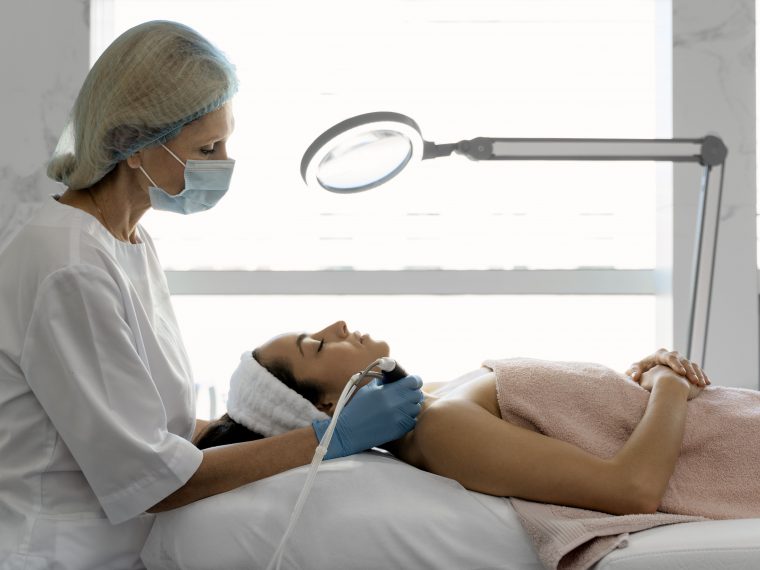Opening a derma clinic can be a daunting task, but with careful planning and execution it can be a very rewarding experience. Here are a few things to keep in mind when planning to open your own derma clinic:
1. Location is key – Make sure to choose a location that is easily accessible for your target market. You want to be situated in an area that is central and convenient for potential clients.
2. Services – Decide on the services you will offer at your derma clinic. Will you offer facials, botox, fillers, laser treatments, etc? It is important to know your niche and what services you will excel at before opening your doors.
3. Equipment – Invest in high quality equipment that will meet the needs of your clients. Research different brands and find the best fit for your budget and clinic.
4. Staff – Hire a team of skilled and professional staff members who are passionate about skin care. They will be the face of your business so it is important to choose wisely.
5. Marketing – Create a marketing plan that will help you reach your target market. Utilize social media, online advertising, and word-of-mouth to get the word out about your new derma clinic.
With careful planning and execution, opening a derma clinic can be a very rewarding experience. Keep these tips in mind and you will be on your way to success!
Equipment for a Derma Clinic
As the demand for beauty and cosmetic procedures increases, so does the need for quality derma clinic equipment. If you’re thinking of starting or expanding a derma clinic, it’s important to invest in the right equipment to ensure that your treatments are performed safely and effectively. Here’s a rundown of some of the essential equipment you’ll need for your derma clinic:
Lasers: Lasers are often used in derma clinics for a variety of treatments, including hair removal, photo rejuvenation, and tattoo removal. There are a variety of lasers on the market, so it’s important to do your research to find the best one for your needs.
Microdermabrasion machines: Microdermabrasion is a popular treatment that uses exfoliation to improve the appearance of skin. A good microdermabrasion machine will help you achieve consistent results and keep your clients happy.
Ultrasound machines: Ultrasound technology is often used in derma clinics for anti-aging treatments. Ultrasound machines help to stimulate collagen production, which can reduce the appearance of wrinkles and fine lines.
LED light therapy: LED light therapy is a relatively new treatment that uses different wavelengths of light to improve the appearance of skin. LED light therapy can be used to treat a variety of conditions, including acne, rosacea, and sun damage.
Injectables: Injectables, such as botulinum toxin and dermal fillers, are commonly used in derma clinics to improve the appearance of wrinkles and fine lines. If you offer injectable treatments, it’s important to have quality needles and syringes on hand.
Topical products: Topical products, such as creams and serums, are often used in conjunction with other treatments to improve the overall appearance of skin. If you offer topical products at your derma clinic, be sure to choose products that are backed by scientific research and proven to be effective.
How to Become a Dermatologist?
Becoming a dermatologist requires completing undergraduate and medical school, followed by a residency in dermatology. The first step to becoming a dermatologist is completing a bachelor’s degree at an accredited university. During your undergraduate studies, you’ll want to focus on taking courses that will prepare you for medical school, such as biology, chemistry, and physics.
After completing your undergraduate studies, you’ll need to take the Medical College Admission Test (MCAT). The MCAT is a standardized test that measures your knowledge of the basic sciences and your ability to apply that knowledge to the practice of medicine. Once you have your MCAT score, you can apply to medical schools.
Dermatology residencies are three years long and require completion of both didactic and clinical training. During your residency, you’ll receive training in medical and surgical dermatology, as well as cosmetic dermatology. After completing your residency, you’ll be eligible to take the board examination to become a board-certified dermatologist.
If you’re interested in becoming a dermatologist, start by completing your undergraduate studies and preparing for the MCAT. Once you’ve been accepted to medical school, complete your residency and take the board examination to become certified.





